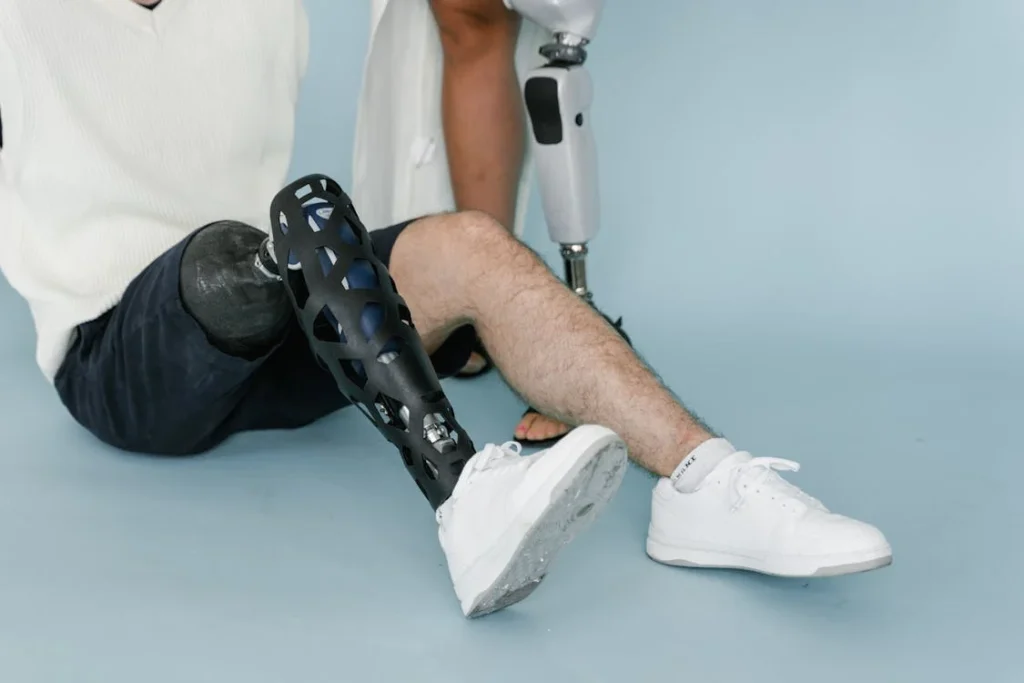When someone loses a limb, the journey to recovery doesn’t end with getting a prosthetic. In fact, that’s just the beginning. One of the most important—but often overlooked—parts of this journey is getting the remaining part of the limb, called the residual limb, ready to use a prosthetic comfortably.
Residual limb conditioning is not just a medical process. It’s a mix of physical care, routine habits, and body awareness that helps the prosthetic fit better and feel more natural. Think of it like preparing the soil before planting a seed. If the ground isn’t ready, nothing will grow right. In the same way, if the residual limb isn’t properly conditioned, the best prosthetic in the world won’t feel right, and using it could even be painful.
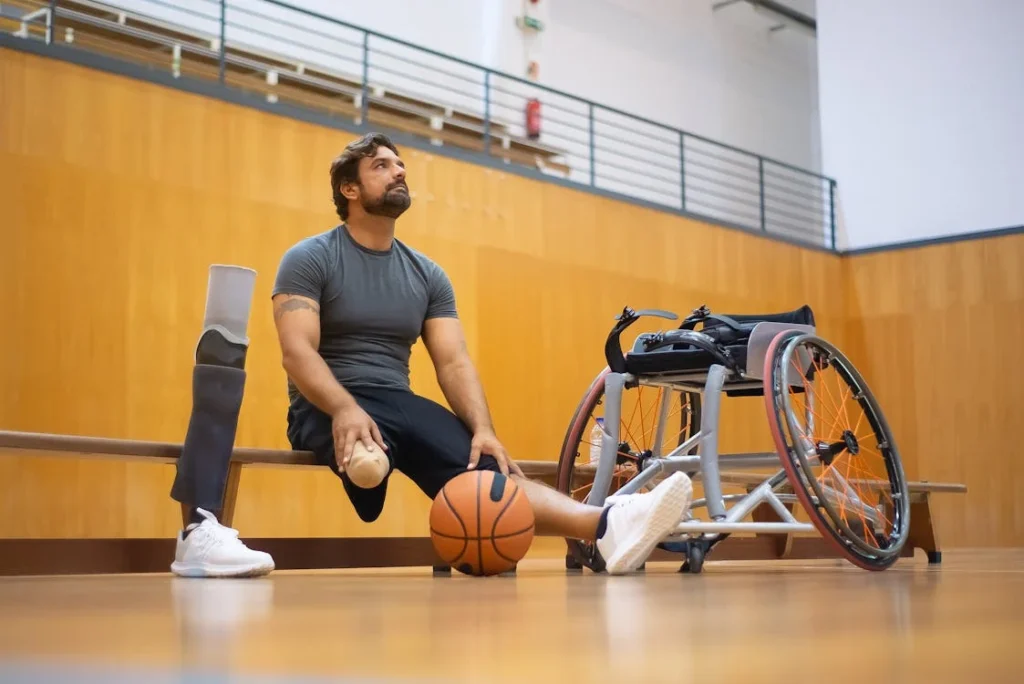
Understanding the Residual Limb
What Happens After Limb Loss
When someone loses a limb, their body goes through big changes—both outside and inside. The area where the limb was removed, known as the residual limb or stump, starts to heal right away. In the beginning, there’s swelling, pain, and a lot of emotional adjustment.
As healing progresses, the shape of the residual limb changes too. This process is called limb maturation, and it’s completely natural.
The muscles, skin, and tissue start to settle down, but they need help to do it in a balanced way. If they don’t, the limb might end up with irregular shapes, soft spots, or tender areas that make it difficult to wear a prosthetic.
Without proper care, the skin might break down, become sore, or even develop infections. Over time, this can make someone avoid using their prosthetic altogether.
Why the Residual Limb is the Foundation
Think of the residual limb as the foundation of a house. If it’s uneven or weak, everything built on top will feel off-balance. A prosthetic socket, which is the part that holds the limb, must fit perfectly to avoid discomfort.
Even small pressure points can create pain, swelling, or sores if the limb isn’t conditioned well. Long-term comfort depends on how well this part of the body is prepared to carry weight, handle movement, and stay healthy under daily wear.
The goal is to create a limb that is strong, smooth, and shaped well. This makes it easier for the prosthetic to grip properly and helps the person use it without fear of pain. It’s not just about appearance—it’s about function. A well-shaped, firm, and healthy limb makes walking, grasping, and daily activities more natural.
Early Steps Make a Lasting Impact
Right after surgery, doctors and rehab teams often begin light compression therapy to help reduce swelling. This helps shape the limb and prepares it for the next stages of rehab. But what happens after those first few weeks?
This is where conditioning becomes even more important. Massaging, wrapping, gentle exercises, and skincare all play a part. These small, consistent habits shape how well the prosthetic will fit and how comfortable it will feel in the future.
The good news is that much of this care can be done at home. With the right guidance and regular attention, anyone can take charge of their limb health.
You don’t need special tools or expensive gear—just patience, simple techniques, and a bit of daily commitment.
Residual limb conditioning isn’t just something to do in the early months. It’s a lifelong habit that continues to support comfort and confidence, no matter how long someone has been using a prosthetic.
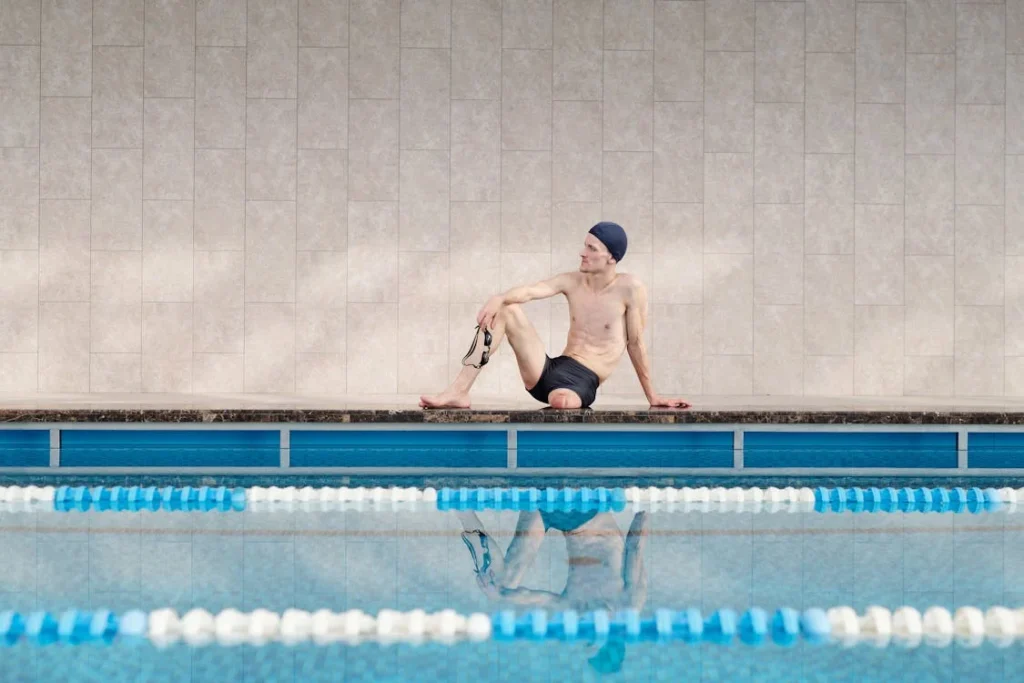
How to Condition the Residual Limb
Gentle Compression to Shape the Limb
One of the first and most important things you can do is help shape the limb with light pressure. This is called compression therapy. Right after surgery, doctors may use elastic bandages or shrinker socks.
These help reduce swelling and guide the limb into a smooth, round shape. This makes it much easier for the prosthetic socket to fit later on.
But even after the initial swelling goes down, compression should remain part of the routine. A well-shaped limb avoids painful pressure points, helps reduce friction inside the socket, and supports even weight distribution.
The key here is balance. Too much pressure can cut off circulation. Too little and the limb doesn’t form properly. If you’re unsure, a trained prosthetist or therapist can help guide how tight to wrap or fit a shrinker.
Over time, the goal is to maintain a shape that matches your prosthetic socket for better alignment and control.
Building Strength With Simple Exercises
Strength matters. The muscles around the residual limb need regular use to stay firm and supportive. Without use, they can become soft and weak. This leads to instability, which makes using a prosthetic more tiring and frustrating.
Basic exercises, even ones done sitting or lying down, can help build muscle tone. Movements like straight leg raises, gentle limb lifts, or squeezing a soft object can help.
If the limb is a below-knee amputation, exercises that involve the thigh and hip become especially important. For above-knee users, the hip and core muscles carry more of the work.
These exercises don’t have to be intense or time-consuming. Just 10 to 15 minutes a day can bring real changes. Over time, stronger muscles help absorb shock, support balance, and improve endurance.
Skin Care as a Daily Ritual
The skin on the residual limb takes on a big job. It rubs against the socket. It carries weight. It can sweat more than usual. And it’s always under pressure. That’s why good skin care is not just a nice-to-have—it’s necessary.
Clean the limb every day with mild soap and warm water. Dry it completely, especially in folds or around scars. Use a simple moisturizer if the skin gets dry, but avoid anything oily if you’re about to wear your prosthetic. Oils can make liners slip and reduce grip.
Also, keep an eye out for changes like redness, blisters, or rough patches. These small signs can be the first clue that something’s not right. Catching these early helps avoid painful sores or infections later.
If you use liners or sleeves, clean them daily too. Dirty liners can cause skin irritation or trap bacteria, which makes the limb more vulnerable.
The Role of Massage
Massage is another simple but powerful way to improve limb health. It helps soften scar tissue, reduce stiffness, and improve blood flow.
A few minutes of gentle circular motion with your fingertips can ease tight spots and keep the tissue flexible.
Scar areas in particular benefit from regular touch. At first, they may feel sensitive or tight. But over time, gentle massage helps loosen them up and make them feel less painful. This can improve the overall feel of the limb and reduce tension inside the socket.
Massage also helps with phantom limb pain in many people. The act of massaging the area can calm nerve endings and reduce the brain’s reaction to the missing part. It’s not a cure, but it’s a simple tool that many find helpful.
Staying Consistent Matters Most
All these steps work best when done regularly. One day of wrapping or massage won’t change much. But doing it every day, even just for a few minutes, adds up.
It becomes a rhythm, like brushing your teeth. Over time, the limb becomes stronger, more stable, and easier to work with.
If you ever notice big changes—like swelling, pain, or shape changes—it’s important to talk to your prosthetist.
Sometimes the limb will change naturally over time, and your socket might need adjustments. That’s normal. The key is to keep paying attention and adapt your care as your body evolves.
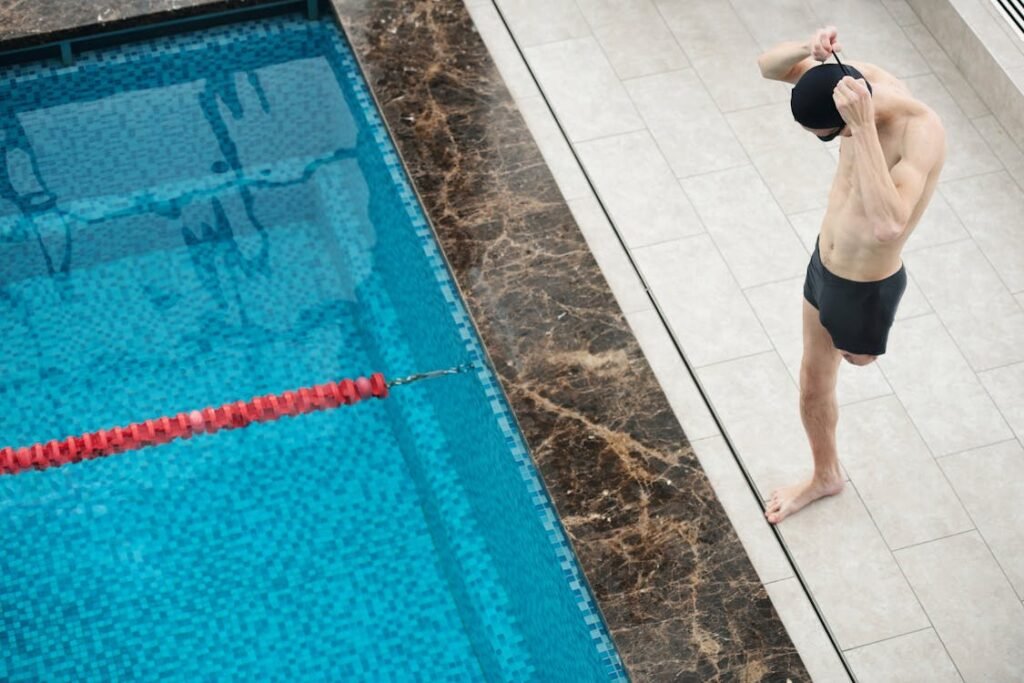
Why Residual Limb Conditioning Improves Long-Term Comfort
Reducing Friction and Pressure Points
One of the biggest reasons prosthetic users feel discomfort is due to friction between the limb and the socket. When the residual limb isn’t firm or evenly shaped, certain spots can press harder than others.
This leads to pressure points that might turn red, sore, or even break open over time.
Conditioning helps by keeping the limb smooth, strong, and properly shaped. It creates a more even contact surface, which spreads pressure more naturally when walking, standing, or moving. That means fewer sore spots and less risk of skin breakdown.
For example, a limb that has been well cared for with compression and massage is less likely to form folds or soft spots that rub against the inside of the socket. This makes the whole experience feel more natural, with fewer distractions or discomfort during everyday activities.
Preventing Long-Term Skin Problems
Without regular care, the skin on the residual limb can become dry, flaky, or irritated. If this happens again and again, it can lead to chronic skin issues. In some cases, people develop rashes, infections, or even pressure ulcers that can make it painful to wear a prosthetic at all.
On the other hand, a clean, healthy, and well-conditioned limb is better protected. The skin can breathe, recover from daily stress, and stay strong under pressure. Moisture and sweat are managed better, and the risk of bacterial growth is lower.
This not only improves daily comfort but helps avoid more serious health problems. Once the skin is damaged, it takes time to heal—and that often means going without the prosthetic for a while, which affects mobility and independence. Preventing those setbacks is one of the best long-term benefits of proper conditioning.
Supporting Better Balance and Control
A strong and stable limb provides a solid base inside the prosthetic. This gives users more control, especially when doing things like walking on uneven ground, standing for long periods, or climbing stairs.
Without good conditioning, the limb may shift inside the socket or feel wobbly, making those tasks harder and riskier.
Even small differences in muscle tone can affect how stable the limb feels. That’s why keeping up with light strength exercises can improve how well the prosthetic moves with your body. It doesn’t just feel better—it works better.
This connection between body and prosthetic becomes more natural when the limb is conditioned. Movements flow more easily. The prosthetic becomes an extension of the body, not a separate tool. This helps build confidence, which leads to more activity and a better quality of life overall.
Reducing Phantom Limb Pain
Many people experience phantom limb sensations—where it feels like the missing limb is still there. Sometimes this feeling is just odd, but it can also be painful. While the exact cause of phantom limb pain isn’t fully understood, there are known ways to manage it—and residual limb conditioning is one of them.
Gentle massage, proper compression, and daily touch can help calm the nerves and send clearer signals to the brain. Over time, these routines may reduce the intensity or frequency of phantom pain. It doesn’t work for everyone, but for many people, it brings noticeable relief.
This shows how physical care can also support emotional well-being. Less pain means better sleep, more movement, and less stress. And it builds a deeper sense of connection with the limb, even after loss.
Making Prosthetic Fit Adjustments Easier
Even with great care, the shape of the residual limb may change slowly over the months and years. This is normal, especially if body weight changes or activity levels increase. But when the limb is well conditioned, these changes are easier to notice and respond to.
If a prosthetic starts to feel loose or tight, small adjustments can be made early—before bigger problems happen.
And because the limb is in good shape, the prosthetist has a better starting point to make those adjustments. There’s less guesswork, and the fit can be fine-tuned more accurately.
It also means fewer visits for major repairs or socket changes. When the limb stays consistent, the prosthetic works better for longer. That saves time, reduces cost, and lowers frustration over the long term.
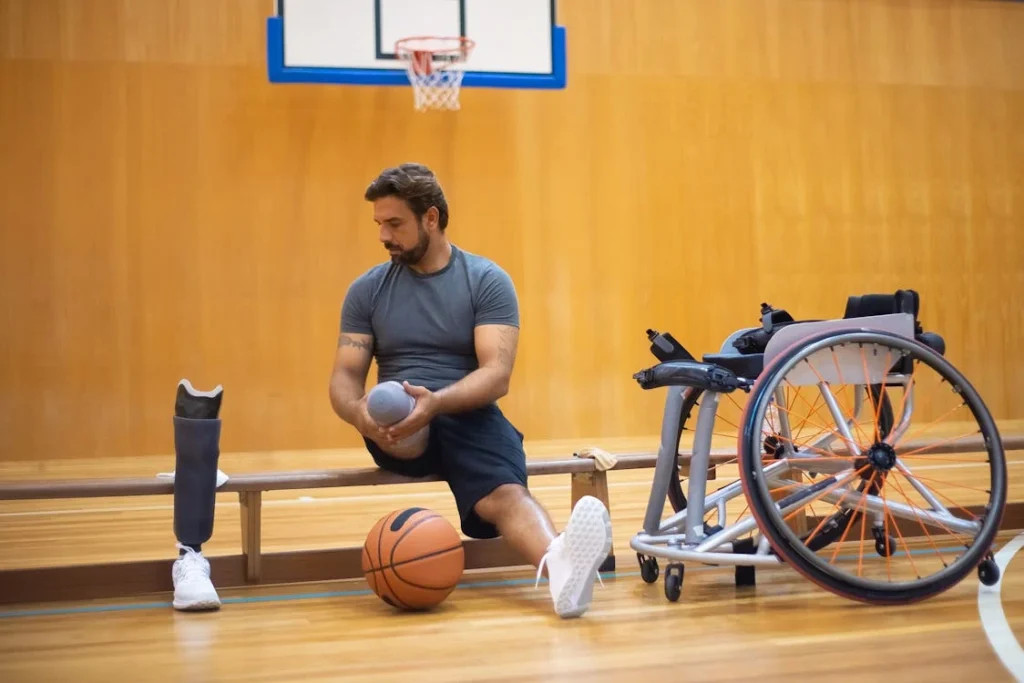
The Emotional Side of Limb Conditioning
Building a Routine When Motivation is Low
After a major life change like limb loss, it’s normal to go through waves of emotions. Some days might feel hopeful and focused, while others feel draining. This emotional rollercoaster can affect how well someone sticks to their limb conditioning routine.
Establishing small, predictable habits helps. You don’t have to overhaul your entire day. Start with one simple action—like massaging the limb each morning for two minutes.
Or wiping down the liner each night before sleep. Over time, these acts become automatic, like brushing your teeth. The less effort it takes to start, the more likely you are to stay on track, even on difficult days.
Creating a routine also adds a sense of control. When your body feels unfamiliar, doing something small but consistent gives back a little power. That emotional anchor can make all the difference when you’re adjusting to life with a prosthetic.
Overcoming the Feeling of Frustration
It’s common to feel frustrated, especially in the early stages of recovery. The limb may feel sore. The prosthetic may not fit just right. And the results of conditioning might not show up right away. It’s easy to wonder if the effort is worth it.
But like any healing process, results take time. The trick is to shift focus from instant changes to long-term progress. Think about how each action—like wrapping the limb or doing stretches—adds up over weeks and months. You may not feel the improvement day to day, but your body is quietly adapting.
Talking to others who’ve been through the same thing can help. Peer support groups, either in-person or online, can remind you that you’re not alone. Hearing how others kept going can be just the push you need to stick with your own care plan.
Creating a Mind-Body Connection
Many prosthetic users describe a turning point when their prosthetic begins to feel less like a foreign object and more like part of their body. That shift doesn’t happen by accident—it’s built through time, touch, and awareness.
When you massage your limb, stretch your muscles, or care for your skin, you’re creating a mind-body link. You’re reminding yourself that this part of your body still matters.
That it still has purpose, strength, and feeling. That awareness builds trust in your body again.
And that trust changes how you move. When you feel safe and in control, you walk with more ease. You use the prosthetic more naturally. This is when mobility becomes freedom—not just a medical goal, but a way to reclaim your everyday life.
The Importance of Self-Compassion
Limb conditioning isn’t just a physical act—it’s a form of self-care. And like all self-care, it works best when done with kindness. Some days you’ll skip it. Some days you’ll feel tired or overwhelmed. That’s okay.
What matters is returning to it without guilt. You’re learning a new way to care for your body, and that takes time. Celebrate small wins, like a stretch that feels easier or skin that’s less irritated than last week. These little signs mean progress.
Being kind to yourself helps you stay motivated, especially during setbacks. And the more gently you approach the process, the more likely you are to stick with it over time.
Support Systems Matter
You don’t have to do this alone. Friends, family, physical therapists, and prosthetists are part of your support circle. Ask for help when you need it. Whether it’s getting reminders, having someone wrap your limb, or just talking through a hard day—these moments of support can make a huge difference.
Even clinics that focus on prosthetic care often offer follow-up help, rehab tools, or virtual guidance. Staying connected with your care team helps you get the most out of your prosthetic—and feel encouraged to keep taking care of your limb each day.
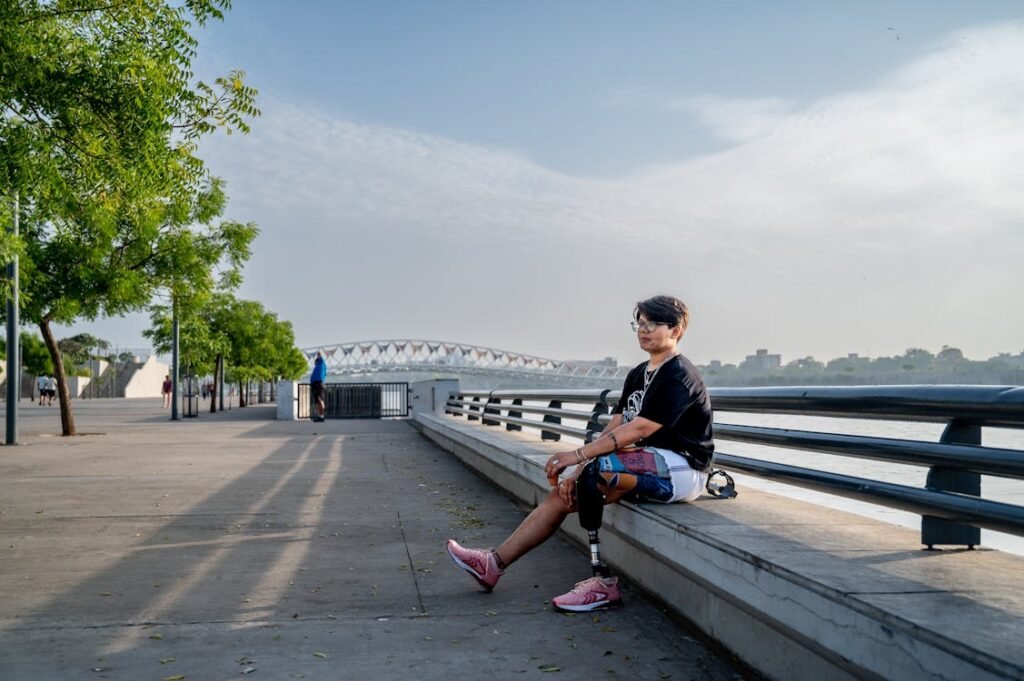
The Relationship Between Prosthetic Fit and Limb Conditioning
A Good Fit Starts With a Good Limb
Even the best-designed prosthetic can’t make up for poor limb conditioning. The fit between the limb and the socket is like a handshake—both sides need to be in sync. If the residual limb is swollen, soft, or uneven, the socket won’t be able to hold it firmly or comfortably. That leads to sliding, rubbing, and pain.
On the other hand, when the limb is shaped and conditioned well, it creates a more secure connection. The socket hugs the limb without squeezing it. There’s less movement inside the socket, which means better control and less wear on the skin. Small steps like wrapping the limb or doing daily massage really do help the prosthetic feel more natural.
Fit Changes Over Time
Many people don’t realize how much the limb changes after the first year of using a prosthetic. Muscle shifts. Skin adapts. Weight may go up or down. Even something like being more active during certain months can affect the size or firmness of the limb.
That’s why it’s important to keep an eye on the fit. If your prosthetic starts to feel too loose or too tight, it doesn’t always mean the prosthetic is wrong—it might mean your limb needs more conditioning.
Swelling can return if compression isn’t used regularly. Soft tissue can increase if strength exercises are skipped. These changes may seem small, but they add up quickly.
Regular limb care helps prevent those changes from becoming problems. And when they do happen, having a well-maintained limb makes it easier for the prosthetist to adjust the socket or liner for a better fit.
Signs Your Prosthetic Fit May Be Off
One way to tell if your limb conditioning needs attention is by how your prosthetic feels during daily use. Some common signs of poor fit include:
- Red or sore spots that don’t go away quickly
- A feeling of the limb “falling” deeper into the socket
- Increased sweating or rubbing
- Trouble balancing or walking straight
- Pain at the end or sides of the limb after wearing the prosthetic for a few hours
These symptoms can often be improved with small adjustments in limb care. For example, reintroducing a regular massage routine or switching to a different kind of compression sock may help reduce swelling or improve limb shape. If problems continue, your prosthetist can assess the socket and guide the next steps.
Working With Your Prosthetist
Prosthetists are not just there to give you a device. They are part of your long-term care team. The more they understand how your limb is responding, the better they can shape the prosthetic to match it. That means open communication is important.
Bring up any changes in the limb—whether it’s skin texture, size, or even new sensations. These details help your prosthetist see the full picture and respond quickly.
If you’ve been doing daily conditioning, mention that too. It shows you’re putting in the work, and it helps them tailor their advice.
It’s also okay to ask questions. Don’t be afraid to bring up concerns about how the prosthetic feels or whether your limb needs more attention. This teamwork is what keeps the fit, and your comfort, in the best possible place.
When Adjustments Are Needed
Even with the best care, you might need adjustments over time. That’s completely normal. What matters is knowing what to look for and when to act.
Regular limb conditioning makes it easier to spot these changes early and respond with small corrections, rather than waiting until the problem grows.
Sometimes, you’ll need a new liner, a tighter socket, or a different alignment. But those technical changes work best when your limb is already healthy and well-conditioned. The smoother the base, the better the prosthetic can do its job.
Keeping your limb in good shape also reduces the number of visits needed for major adjustments. It gives your care team a more consistent surface to work with, which saves time and leads to better results.
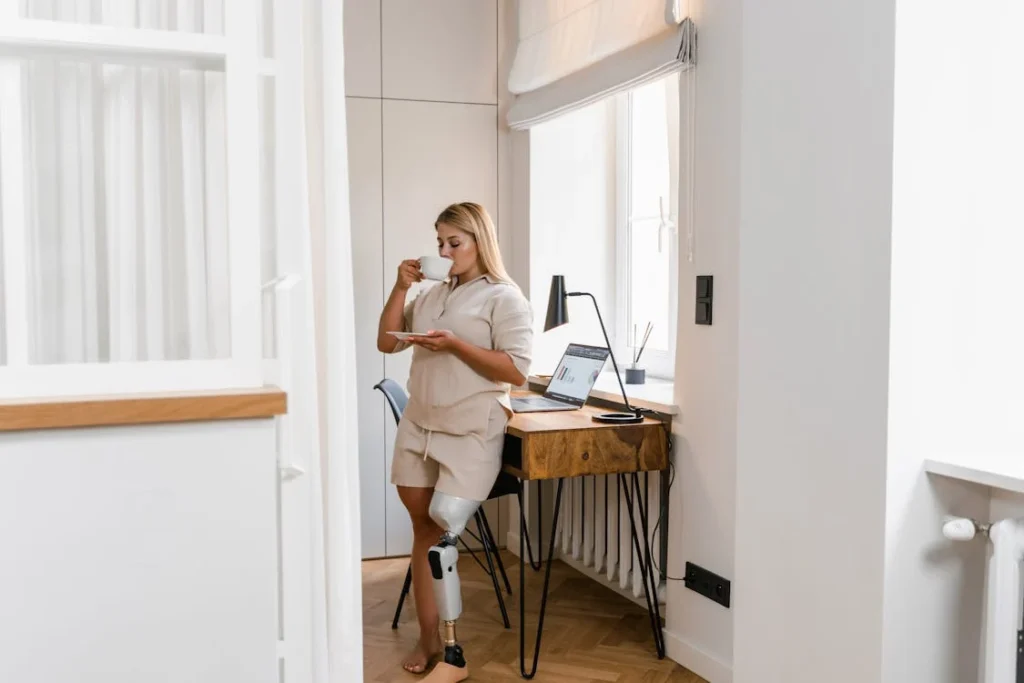
How Residual Limb Conditioning Supports Everyday Life
Moving With More Freedom
One of the biggest benefits of a well-conditioned residual limb is freedom of movement. When the limb is stable, shaped well, and free from pain, it allows users to move with more ease. Walking feels smoother. Climbing stairs becomes less tiring. Getting up from a chair or into a car feels more natural.
This isn’t just about mobility—it’s about independence. Every time the prosthetic feels secure, it builds confidence. That confidence leads to more activity. More activity strengthens the body. And the cycle continues. Residual limb conditioning is the quiet force behind all this progress.
Without it, things become harder. Small steps feel like effort. Fear of pain or slipping increases. People may avoid certain movements or activities altogether. That’s why even a few minutes of daily care can have a long-lasting effect.
Staying Active Without Setbacks
For people who want to stay active, conditioning is essential. Whether it’s a walk around the block or a game of cricket with friends, the limb has to be ready to handle pressure and movement. Skipping limb care might not show consequences right away, but over time it can lead to sore skin, muscle fatigue, or even injury.
Good conditioning prepares the limb for different types of motion—twisting, turning, stopping, and starting. These movements can place sudden stress on the socket or the skin. A strong, well-maintained limb absorbs these shifts better. That means fewer setbacks and more consistent activity.
And when you’re active without pain, it’s easier to stay motivated. You’re more likely to return to the activities you love, which improves both physical and emotional health.
Going Back to Work or School
For many people, a big goal after amputation is returning to work or school. That transition brings both opportunity and challenge. Sitting for long hours, commuting, or working on your feet all require endurance—and that’s where limb conditioning makes a major difference.
A firm, conditioned limb holds its shape through long days. It reduces discomfort from sitting in the same position or moving around a lot. It also helps people focus better because they’re not constantly distracted by soreness or shifting inside the prosthetic.
Conditioning gives users the confidence to take on tasks, attend meetings, and participate without constantly adjusting their socket or worrying about their limb. It’s a key part of regaining a full, active life.
Making Travel Easier
Traveling with a prosthetic brings unique challenges—walking longer distances, navigating stairs or uneven surfaces, and spending hours sitting or moving. A well-conditioned limb can make all of these tasks easier.
For example, sitting on a long train ride or flight can increase swelling if the limb isn’t compressed properly. With good care habits in place, this becomes less of an issue. Massaging before and after travel, wearing a shrinker sock during the trip, and doing a few light stretches all help.
Plus, travel usually means carrying bags, climbing in and out of vehicles, and adapting to new environments. A strong and balanced limb makes it easier to respond to these changes without fear of pain or injury.
Enjoying Leisure and Hobbies Again
Getting back to hobbies—gardening, painting, dancing, or playing an instrument—is about more than having time. It’s about having the physical comfort and control to enjoy those moments without strain. If the limb is sore or unstable, it’s hard to focus or stay engaged.
Conditioning supports the flexibility, balance, and comfort needed for hobbies. Whether it’s kneeling in the garden or moving in rhythm to music, a strong limb makes the experience better. It brings joy back into activities that were once taken for granted.
And that joy is essential. It’s not just about health—it’s about happiness. Residual limb conditioning plays a quiet, behind-the-scenes role in that happiness, allowing users to reclaim parts of their life they thought were lost.
Conclusion
Residual limb conditioning is more than just a routine—it’s a foundation for comfort, confidence, and long-term independence. From reducing pressure and pain to improving prosthetic fit and movement, daily care creates lasting results. It’s not about perfection, but consistency. A few simple steps, done regularly, can shape not just the limb, but the entire recovery journey.
Whether you’re new to prosthetics or years into the process, it’s never too late to start giving your limb the attention it deserves. Your body will respond with strength, your prosthetic will feel more natural, and your daily life will feel a little easier.
Care for your limb. Care for your life.



